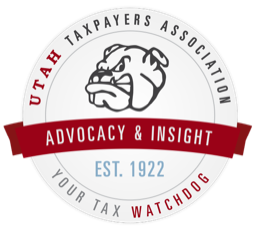The sight (or sound) of the Frontrunner train and various UTA buses and Trax has become a familiar one for many Utahns. Servicing over 40 million customers annually, the massive and complex transportation relies on various sources of revenue to operate, most notably sales tax revenues, but not everyone is satisfied with the current arrangement.
A recent report from the UTA breaks down the sales tax revenues collected by city and county. The table below, taken from the report, shows a total 2023 sales tax revenue of almost half a billion dollars, the vast majority of which (60.5%) is collected in Salt Lake County.
Counties and cities benefit greatly from UTA services, both in terms of resident access and the opportunities these services provide to the local economy. Residents of a city or county can use the train or bus service to get to work or recreational spots, but equally, the existence of the UTA means that those locations benefit from reduced traffic, increased foot-traffic to recreation and retail spots, and general accessibility. Even those who don’t use the UTA themselves benefit from its operation. For example, gameday in Provo benefits from both the Frontrunner and the Utah Valley Express UTA services. BYU fans from Salt Lake County (do those exist?) can avoid busy I-15 traffic by taking the Frontrunner to the Provo station, then take the UVX directly to the stadium. Rather than 60,000 fans getting to the stadium via 35,000 cars – imagine the impact on the roads, traffic, law enforcement personnel – UTA services reduce gameday traffic to perhaps 20,000 cars. In this example, Salt Lake County residents, Utah County (Provo city) residents, and Provo as a city all benefit.
However, the extent to which a city contributes to the UTA is not always reflected in the benefits it receives. For example, in 2023, Riverton contributed $7.8m in sales tax revenue to UTA but does not have UTA service. Attempting to get from Riverton to Salt Lake City using transit options in Google Maps yields no results. Consequently, Riverton residents are paying for a service they do not receive. It is good tax policy to have a relationship between who pays for a service and who benefits from it. There is a reasonable argument that this relationship is flawed in the example of the UTA.
Solutions to this problem include attempting to weight city contributions based on benefit received by both residents and the city itself – though this could be hard to quantify – or pushing UTA funding further towards passengers (increasing ticket prices). Currently passenger fees account for just 5% of UTA funding, so there is both scope and justification for pursuing this route. As Utah grapples with its transportation future, there is an important balance to be struck between who pays for public transportation and who benefits. Your Utah Taxpayers Association is committed to helping Legislators finding that balance.
